Sensor Fusion - Test Bench
Table of Contents
1 Experimental Setup
The goal of this experimental setup is to experimentally merge inertial sensors.
To merge the sensors, optimal and robust complementary filters are designed.
The inertial sensors used are shown in Table
| Type | Model |
|---|---|
| Accelerometer | PCB 393B05 - Vertical (link) |
| Geophone | Mark Product L-22 - Vertical |
| Specification | Value |
|---|---|
| Sensitivity | 1.02 [V/(m/s2)] |
| Resonant Frequency | > 2.5 [kHz] |
| Resolution (1 to 10kHz) | 0.00004 [m/s2 rms] |
| Specification | Value |
|---|---|
| Sensitivity | To be measured [V/(m/s)] |
| Resonant Frequency | 2 [Hz] |
The ADC used are the IO131 Speedgoat module (link) with a 16bit resolution over +/- 10V.
The geophone signals are amplified using a DLPVA-100-B-D voltage amplified from Femto (link). The force sensor signal is amplified using a Low Noise Voltage Preamplifier from Ametek (link).
Geophone electronics:
- gain: 10 (20dB)
- low pass filter: 1.5Hz
- hifh pass filter: 100kHz (2nd order)
Force Sensor electronics:
- gain: 10 (20dB)
- low pass filter: 1st order at 3Hz
- high pass filter: 1st order at 30kHz
2 IFF Development
2.1 Load Data
id_ol = load('./mat/identification_noise_bis.mat', 'd', 'acc_1', 'acc_2', 'geo_1', 'geo_2', 'f_meas', 'u', 't');
id_ol.d = detrend(id_ol.d, 0);
id_ol.acc_1 = detrend(id_ol.acc_1, 0);
id_ol.acc_2 = detrend(id_ol.acc_2, 0);
id_ol.geo_1 = detrend(id_ol.geo_1, 0);
id_ol.geo_2 = detrend(id_ol.geo_2, 0);
id_ol.f_meas = detrend(id_ol.f_meas, 0);
id_ol.u = detrend(id_ol.u, 0);
2.2 Experimental Data
Ts = id_ol.t(2) - id_ol.t(1); win = hann(ceil(10/Ts));
[tf_fmeas_est, f] = tfestimate(id_ol.u, id_ol.f_meas, win, [], [], 1/Ts); % [V/m] [co_fmeas_est, ~] = mscohere( id_ol.u, id_ol.f_meas, win, [], [], 1/Ts);
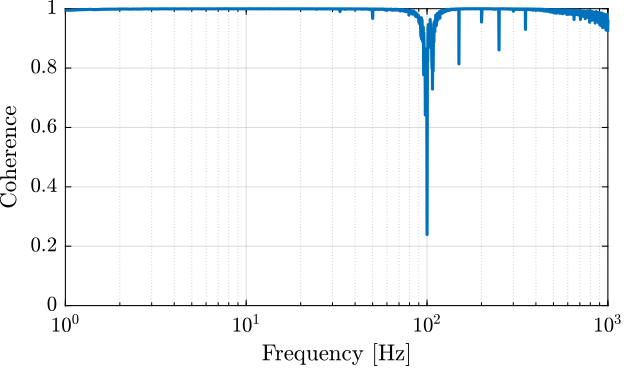
Figure 1: Coherence for the identification of the IFF plant
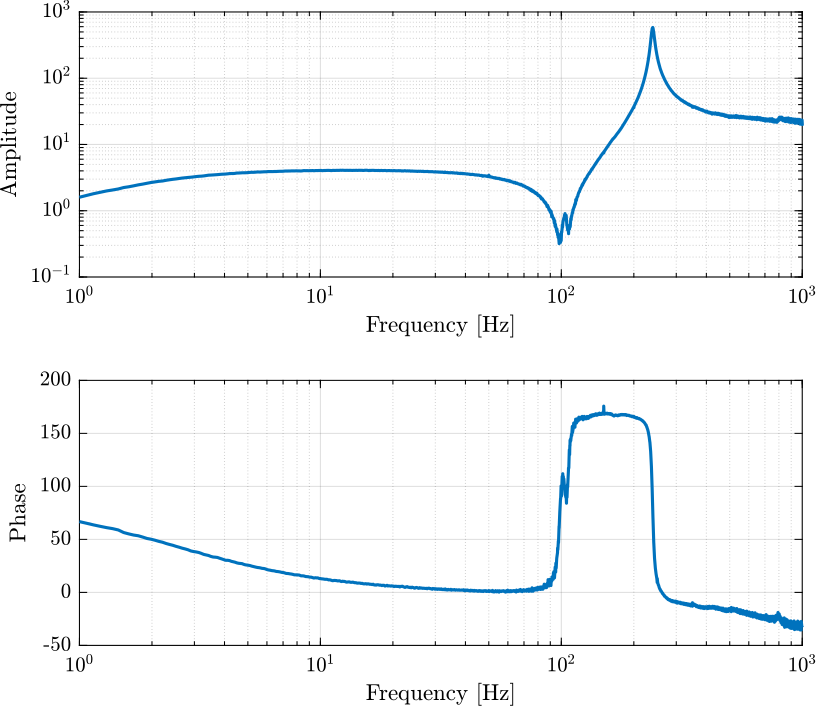
Figure 2: Bode plot of the identified IFF plant
2.3 Model of the IFF Plant
wz = 2*pi*102;
xi_z = 0.01;
wp = 2*pi*239.4;
xi_p = 0.015;
Giff = 2.2*(s^2 + 2*xi_z*s*wz + wz^2)/(s^2 + 2*xi_p*s*wp + wp^2) * ... % Dynamics
10*(s/3/pi/(1 + s/3/pi)) * ... % Low pass filter and gain of the voltage amplifier
exp(-Ts*s); % Time delay induced by ADC/DAC

Figure 3: IFF Plant + Model
2.4 Root Locus and optimal Controller
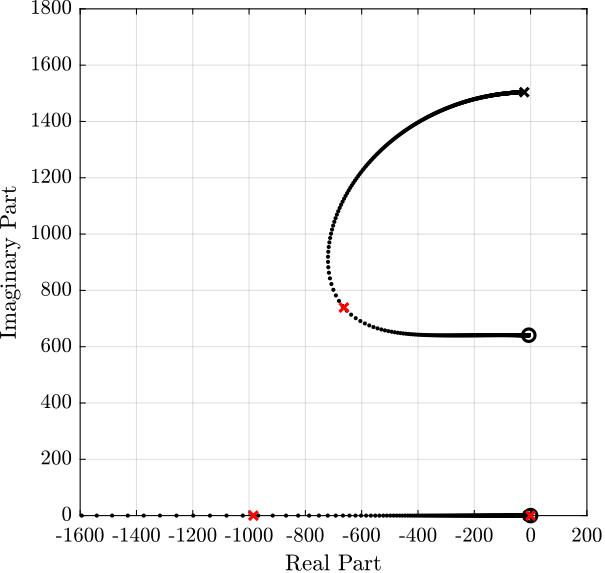
Figure 4: Root Locus for the IFF control
The controller that yield maximum damping is:
Kiff_opt = 102/(s + 2*pi*2);
2.5 Verification of the achievable damping
A new identification is performed with the resonance damped. It helps to not induce too much motion at the resonance and damage the actuator.
id_cl = load('./mat/identification_noise_iff_bis.mat', 'd', 'acc_1', 'acc_2', 'geo_1', 'geo_2', 'f_meas', 'u', 't');
id_cl.d = detrend(id_cl.d, 0);
id_cl.acc_1 = detrend(id_cl.acc_1, 0);
id_cl.acc_2 = detrend(id_cl.acc_2, 0);
id_cl.geo_1 = detrend(id_cl.geo_1, 0);
id_cl.geo_2 = detrend(id_cl.geo_2, 0);
id_cl.f_meas = detrend(id_cl.f_meas, 0);
id_cl.u = detrend(id_cl.u, 0);
[tf_G_ol_est, f] = tfestimate(id_ol.u, id_ol.d, win, [], [], 1/Ts); [co_G_ol_est, ~] = mscohere( id_ol.u, id_ol.d, win, [], [], 1/Ts); [tf_G_cl_est, ~] = tfestimate(id_cl.u, id_cl.d, win, [], [], 1/Ts); [co_G_cl_est, ~] = mscohere( id_cl.u, id_cl.d, win, [], [], 1/Ts);
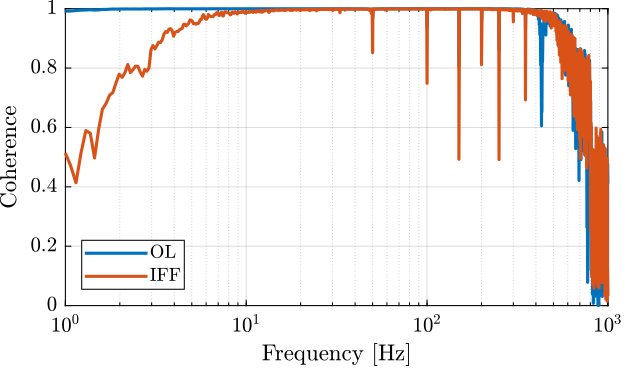
Figure 5: Coherence for the transfer function from F to d, with and without IFF
Don’t really understand the low frequency behavior.
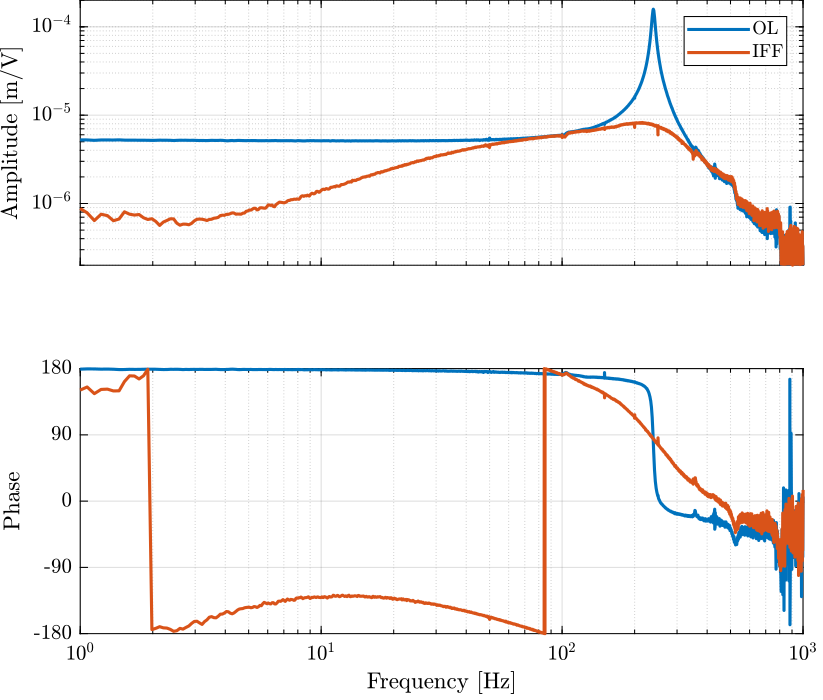
Figure 6: Coherence for the transfer function from F to d, with and without IFF
3 Generate the excitation signal
3.1 Requirements
The requirements on the excitation signal is:
- General much larger motion that the measured motion during the huddle test
- Don’t damage the actuator
To determine the perfect voltage signal to be generated, we need two things:
- the transfer function from voltage to mass displacement
- the PSD of the measured motion by the inertial sensors
- not saturate the sensor signals
- provide enough signal/noise ratio (good coherence) in the frequency band of interest (~0.5Hz to 3kHz)
3.2 Transfer function from excitation signal to displacement
Let’s first estimate the transfer function from the excitation signal in [V] to the generated displacement in [m] as measured by the inteferometer.
id_cl = load('./mat/identification_noise_iff_bis.mat', 'd', 'acc_1', 'acc_2', 'geo_1', 'geo_2', 'f_meas', 'u', 't');
Ts = id_cl.t(2) - id_cl.t(1); win = hann(ceil(10/Ts));
[tf_G_cl_est, f] = tfestimate(id_cl.u, id_cl.d, win, [], [], 1/Ts); [co_G_cl_est, ~] = mscohere( id_cl.u, id_cl.d, win, [], [], 1/Ts);
Approximate transfer function from voltage output to generated displacement when IFF is used, in [m/V].
G_d_est = -5e-6*(2*pi*230)^2/(s^2 + 2*0.3*2*pi*240*s + (2*pi*240)^2);

Figure 7: Estimation of the transfer function from the excitation signal to the generated displacement
3.3 Motion measured during Huddle test
We now compute the PSD of the measured motion by the inertial sensors during the huddle test.
ht = load('./mat/huddle_test.mat', 'd', 'acc_1', 'acc_2', 'geo_1', 'geo_2', 'f_meas', 'u', 't');
ht.d = detrend(ht.d, 0);
ht.acc_1 = detrend(ht.acc_1, 0);
ht.acc_2 = detrend(ht.acc_2, 0);
ht.geo_1 = detrend(ht.geo_1, 0);
ht.geo_2 = detrend(ht.geo_2, 0);
[p_d, f] = pwelch(ht.d, win, [], [], 1/Ts); [p_acc1, ~] = pwelch(ht.acc_1, win, [], [], 1/Ts); [p_acc2, ~] = pwelch(ht.acc_2, win, [], [], 1/Ts); [p_geo1, ~] = pwelch(ht.geo_1, win, [], [], 1/Ts); [p_geo2, ~] = pwelch(ht.geo_2, win, [], [], 1/Ts);
Using an estimated model of the sensor dynamics from the documentation of the sensors, we can compute the ASD of the motion in \(m/\sqrt{Hz}\) measured by the sensors.
G_acc = 1/(1 + s/2/pi/2500); % [V/(m/s2)] G_geo = -120*s^2/(s^2 + 2*0.7*2*pi*2*s + (2*pi*2)^2); % [V/(m/s)]
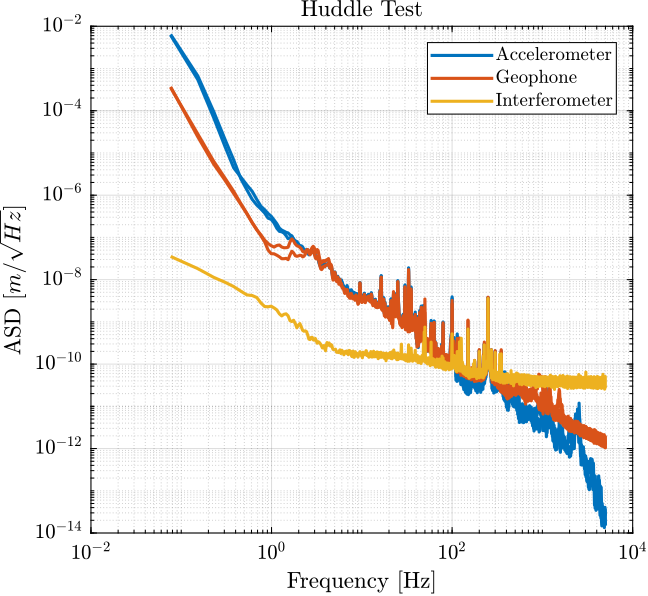
Figure 8: ASD of the motion measured by the sensors
From the ASD of the motion measured by the sensors, we can create an excitation signal that will generate much motion motion that the motion under no excitation.
We create G_exc that corresponds to the wanted generated motion.
G_exc = 0.2e-6/(1 + s/2/pi/2)/(1 + s/2/pi/50);
And we create a time domain signal y_d that have the spectral density described by G_exc.
Fs = 1/Ts; t = 0:Ts:180; % Time Vector [s] u = sqrt(Fs/2)*randn(length(t), 1); % Signal with an ASD equal to one y_d = lsim(G_exc, u, t);
[pxx, ~] = pwelch(y_d, win, 0, [], Fs);
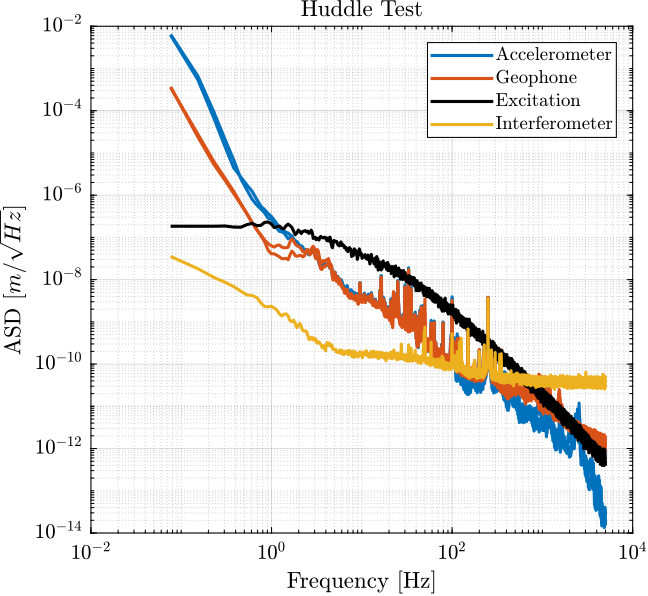
Figure 9: Comparison of the ASD of the motion during Huddle and the wanted generated motion
We can now generate the voltage signal that will generate the wanted motion.
y_v = lsim(G_exc * ... % from unit PSD to shaped PSD
(1 + s/2/pi/50) * ... % Inverse of pre-filter included in the Simulink file
1/G_d_est * ... % Wanted displacement => required voltage
1/(1 + s/2/pi/5e3), ... % Add some high frequency filtering
u, t);
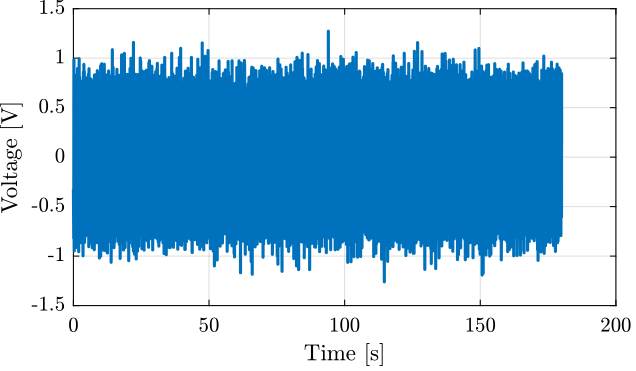
Figure 10: Generated excitation signal
4 Identification of the Inertial Sensors Dynamics
4.1 Load Data
id = load('./mat/identification_noise_opt_iff.mat', 'd', 'acc_1', 'acc_2', 'geo_1', 'geo_2', 'f_meas', 'u', 't');
ht = load('./mat/huddle_test.mat', 'd', 'acc_1', 'acc_2', 'geo_1', 'geo_2', 'f_meas', 'u', 't');
ht.d = detrend(ht.d, 0); ht.acc_1 = detrend(ht.acc_1, 0); ht.acc_2 = detrend(ht.acc_2, 0); ht.geo_1 = detrend(ht.geo_1, 0); ht.geo_2 = detrend(ht.geo_2, 0); ht.f_meas = detrend(ht.f_meas, 0);
id.d = detrend(id.d, 0); id.acc_1 = detrend(id.acc_1, 0); id.acc_2 = detrend(id.acc_2, 0); id.geo_1 = detrend(id.geo_1, 0); id.geo_2 = detrend(id.geo_2, 0); id.f_meas = detrend(id.f_meas, 0);
4.2 Compare PSD during Huddle and and during identification
Ts = ht.t(2) - ht.t(1); win = hann(ceil(10/Ts));
[p_id_d, f] = pwelch(id.d, win, [], [], 1/Ts); [p_id_acc1, ~] = pwelch(id.acc_1, win, [], [], 1/Ts); [p_id_acc2, ~] = pwelch(id.acc_2, win, [], [], 1/Ts); [p_id_geo1, ~] = pwelch(id.geo_1, win, [], [], 1/Ts); [p_id_geo2, ~] = pwelch(id.geo_2, win, [], [], 1/Ts); [p_id_fmeas, ~] = pwelch(id.f_meas, win, [], [], 1/Ts);
[p_ht_d, ~] = pwelch(ht.d, win, [], [], 1/Ts); [p_ht_acc1, ~] = pwelch(ht.acc_1, win, [], [], 1/Ts); [p_ht_acc2, ~] = pwelch(ht.acc_2, win, [], [], 1/Ts); [p_ht_geo1, ~] = pwelch(ht.geo_1, win, [], [], 1/Ts); [p_ht_geo2, ~] = pwelch(ht.geo_2, win, [], [], 1/Ts); [p_ht_fmeas, ~] = pwelch(ht.f_meas, win, [], [], 1/Ts);
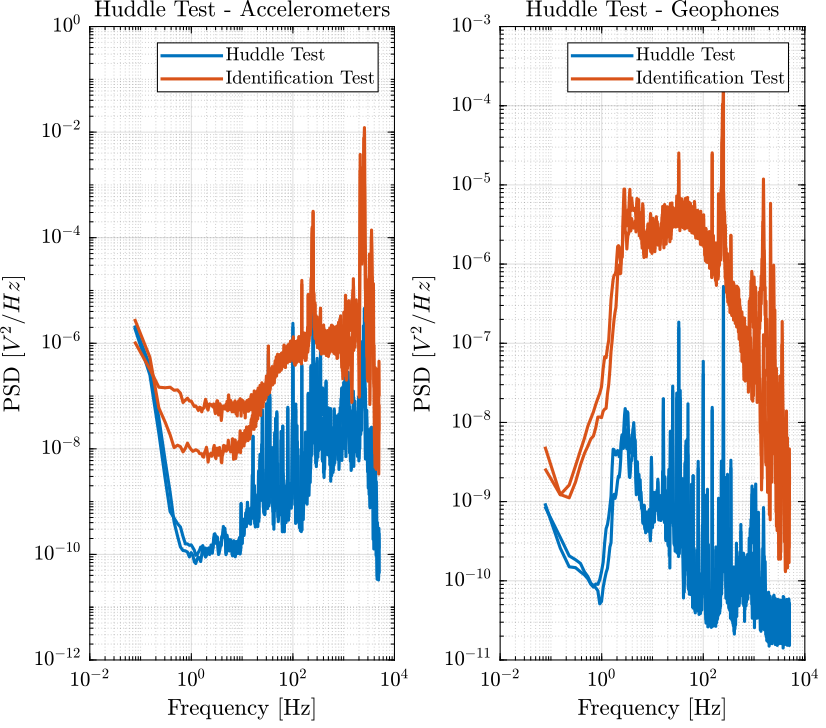
Figure 11: Comparison of the PSD of the measured motion during the Huddle test and during the identification
4.3 Compute transfer functions
[tf_acc1_est, f] = tfestimate(id.d, id.acc_1, win, [], [], 1/Ts); [co_acc1_est, ~] = mscohere( id.d, id.acc_1, win, [], [], 1/Ts); [tf_acc2_est, ~] = tfestimate(id.d, id.acc_2, win, [], [], 1/Ts); [co_acc2_est, ~] = mscohere( id.d, id.acc_2, win, [], [], 1/Ts); [tf_geo1_est, ~] = tfestimate(id.d, id.geo_1, win, [], [], 1/Ts); [co_geo1_est, ~] = mscohere( id.d, id.geo_1, win, [], [], 1/Ts); [tf_geo2_est, ~] = tfestimate(id.d, id.geo_2, win, [], [], 1/Ts); [co_geo2_est, ~] = mscohere( id.d, id.geo_2, win, [], [], 1/Ts);

Figure 12: Coherence for the estimation of the sensor dynamics
Model of the inertial sensors:
G_acc = 1/(1 + s/2/pi/2500); % [V/(m/s2)] G_geo = -1200*s^2/(s^2 + 2*0.7*2*pi*2*s + (2*pi*2)^2); % [[V/(m/s)]
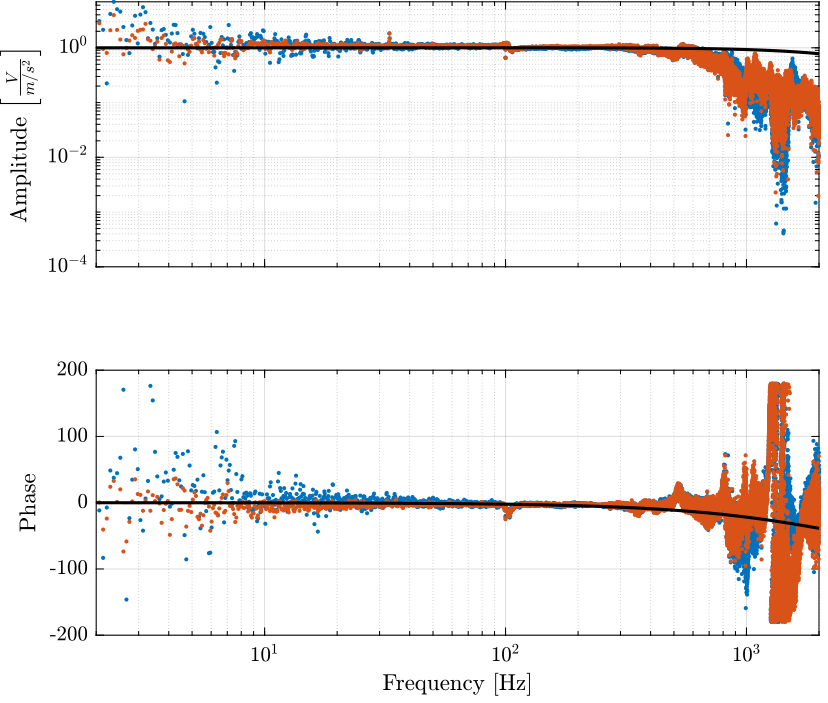
Figure 13: Identified dynamics of the accelerometers

Figure 14: Identified dynamics of the geophones
5 Inertial Sensor Noise and H2 Synthesis
5.1 Load Data
id = load('./mat/identification_noise_opt_iff.mat', 'd', 'acc_1', 'acc_2', 'geo_1', 'geo_2', 'f_meas', 'u', 't');
id.d = detrend(id.d, 0); id.acc_1 = detrend(id.acc_1, 0); id.acc_2 = detrend(id.acc_2, 0); id.geo_1 = detrend(id.geo_1, 0); id.geo_2 = detrend(id.geo_2, 0); id.f_meas = detrend(id.f_meas, 0);
5.2 ASD of the Measured displacement
Ts = id.t(2) - id.t(1); win = hann(ceil(10/Ts));
[p_id_d, f] = pwelch(id.d, win, [], [], 1/Ts); [p_id_acc1, ~] = pwelch(id.acc_1, win, [], [], 1/Ts); [p_id_acc2, ~] = pwelch(id.acc_2, win, [], [], 1/Ts); [p_id_geo1, ~] = pwelch(id.geo_1, win, [], [], 1/Ts); [p_id_geo2, ~] = pwelch(id.geo_2, win, [], [], 1/Ts); [p_id_fmeas, ~] = pwelch(id.f_meas, win, [], [], 1/Ts);
Let’s use a model of the accelerometer and geophone to compute the motion from the measured voltage.
G_acc = 1/(1 + s/2/pi/2500); % [V/(m/s2)] G_geo = -1200*s^2/(s^2 + 2*0.7*2*pi*2*s + (2*pi*2)^2); % [[V/(m/s)]
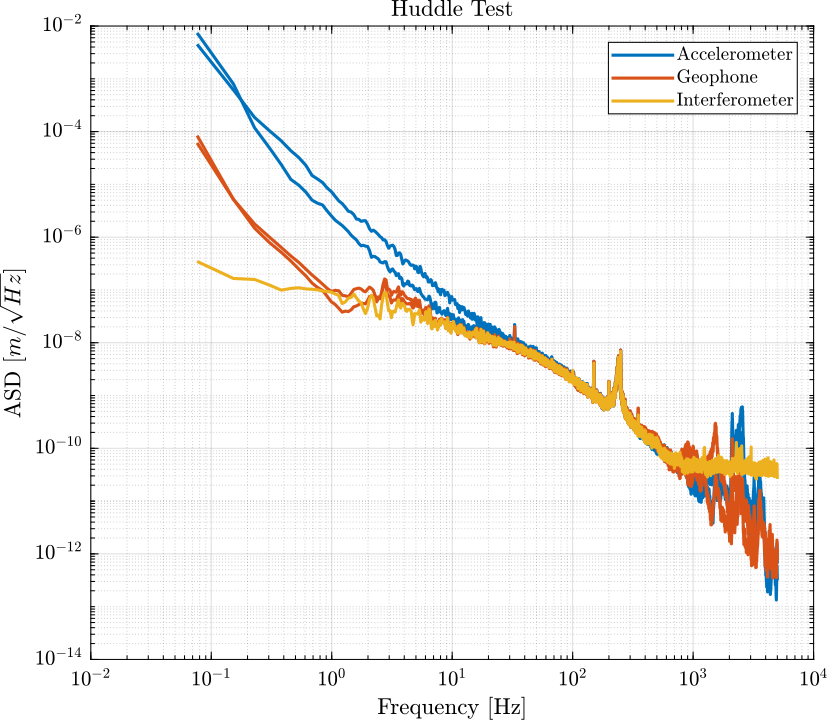
Figure 15: ASD of the measured displacement as measured by all the sensors
5.3 ASD of the Sensor Noise
[ ]Add formula to estimate the noise from data
[coh_acc, ~] = mscohere(id.acc_1, id.acc_2, win, [], [], 1/Ts); [coh_geo, ~] = mscohere(id.geo_1, id.geo_2, win, [], [], 1/Ts);
pN_acc = sqrt(p_id_acc1.*(1 - coh_acc)) .* ... % [V/sqrt(Hz)]
1./abs(squeeze(freqresp(G_acc*s^2, f, 'Hz'))); % [m/V]
pN_geo = sqrt(p_id_geo1.*(1 - coh_geo)) .* ... % [V/sqrt(Hz)]
1./abs(squeeze(freqresp(G_geo*s, f, 'Hz'))); % [m/V]
figure;
hold on;
plot(f, sqrt(p_id_acc1)./abs(squeeze(freqresp(G_acc*s^2, f, 'Hz'))), ...
'DisplayName', 'Accelerometer');
plot(f, sqrt(p_id_geo1)./abs(squeeze(freqresp(G_geo*s, f, 'Hz'))), ...
'DisplayName', 'Geophone');
plot(f, pN_acc, '-', 'DisplayName', 'Accelerometers - Noise');
plot(f, pN_geo, '-', 'DisplayName', 'Geophones - Noise');
hold off;
set(gca, 'xscale', 'log'); set(gca, 'yscale', 'log');
xlabel('Frequency [Hz]'); ylabel('ASD $\left[\frac{m}{\sqrt{Hz}}\right]$');
xlim([1, 5000]); ylim([1e-13, 1e-5]);
legend('location', 'northeast');
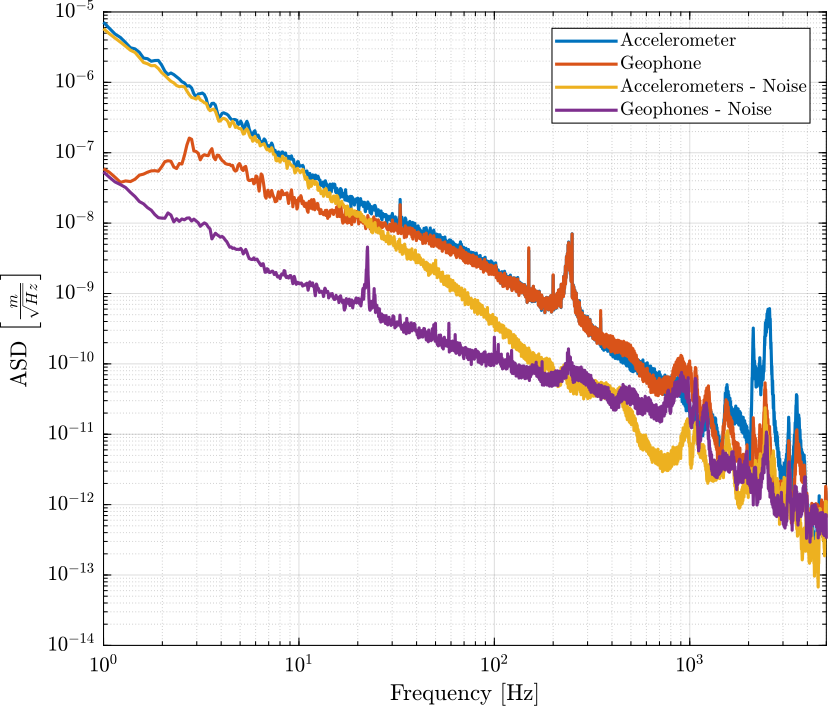
Figure 16: Comparison of the computed ASD of the noise of the two inertial sensors
5.4 Noise Model
N_acc = 1*(s/(2*pi*2000) + 1)^2/(s + 0.1*2*pi)/(s + 1e3*2*pi); % [m/sqrt(Hz)] N_geo = 4e-4*(s/(2*pi*200) + 1)/(s + 1e3*2*pi); % [m/sqrt(Hz)]
freqs = logspace(0, 4, 1000);
figure;
hold on;
plot(f, pN_acc.*(2*pi*f), '-', 'DisplayName', 'Accelerometers - Noise');
plot(f, pN_geo.*(2*pi*f), '-', 'DisplayName', 'Geophones - Noise');
set(gca, 'ColorOrderIndex', 1);
plot(freqs, abs(squeeze(freqresp(N_acc, freqs, 'Hz'))), '--', 'DisplayName', 'Geophones - Noise Model');
plot(freqs, abs(squeeze(freqresp(N_geo, freqs, 'Hz'))), '--', 'DisplayName', 'Geophones - Noise Model');
hold off;
set(gca, 'xscale', 'log'); set(gca, 'yscale', 'log');
xlabel('Frequency [Hz]'); ylabel('ASD $\left[\frac{m/s}{\sqrt{Hz}}\right]$');
xlim([1, 5000]);
legend('location', 'northeast');
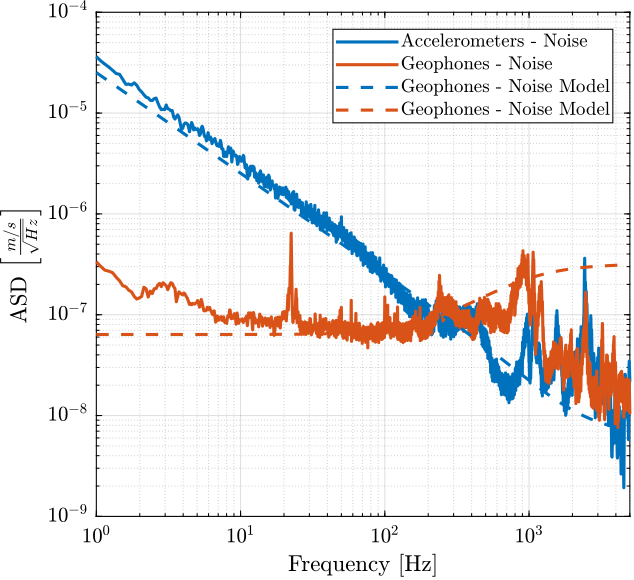
Figure 17: ASD of the velocity noise measured by the sensors and the noise models
5.5 H2 Synthesis
The generalize plant is created.
P = [0 N_acc 1;
N_geo -N_acc 0];
And we do the \(\mathcal{H}_2\) synthesis using the h2syn command.
[H_geo, ~, gamma] = h2syn(P, 1, 1); H_acc = 1 - H_geo;
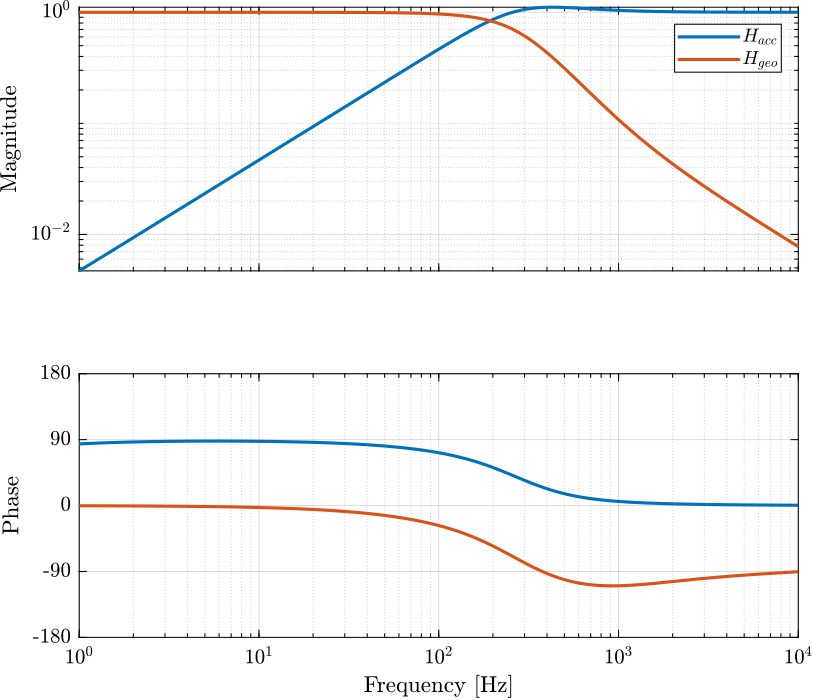
Figure 18: Obtained Complementary Filters
5.6 Results
freqs = logspace(0, 4, 1000);
figure;
hold on;
plot(f, pN_acc.*(2*pi*f), '-', 'DisplayName', 'Accelerometers - Noise');
plot(f, pN_geo.*(2*pi*f), '-', 'DisplayName', 'Geophones - Noise');
plot(f, sqrt((pN_acc.*(2*pi*f)).^2.*abs(squeeze(freqresp(H_acc, f, 'Hz'))).^2 + (pN_geo.*(2*pi*f)).^2.*abs(squeeze(freqresp(H_geo, f, 'Hz'))).^2), 'k-', 'DisplayName', 'Super Sensor - Noise');
hold off;
set(gca, 'xscale', 'log'); set(gca, 'yscale', 'log');
xlabel('Frequency [Hz]'); ylabel('ASD $\left[\frac{m/s}{\sqrt{Hz}}\right]$');
xlim([1, 5000]);
legend('location', 'northeast');
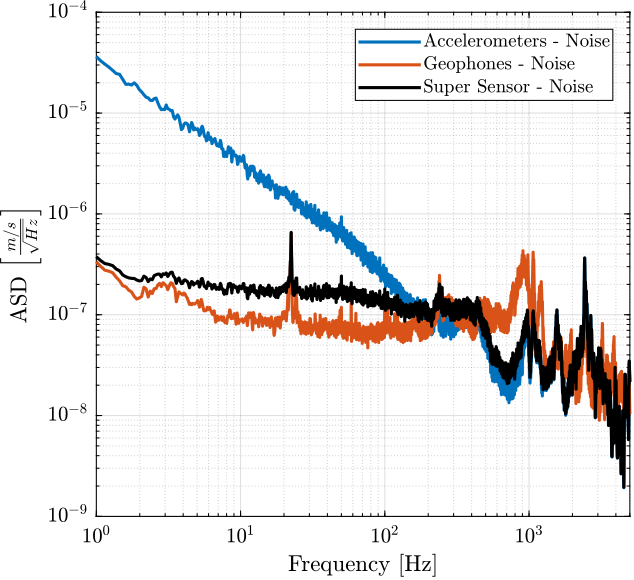
Figure 19: ASD of the super sensor noise (velocity)
Integrate only down to 1Hz.
[~, i_1Hz] = min(abs(f - 1));
CPS_acc = 1/pi*flip(-cumtrapz(2*pi*flip(f), flip((pN_acc.*(2*pi*f)).^2))); CPS_geo = 1/pi*flip(-cumtrapz(2*pi*flip(f), flip((pN_geo.*(2*pi*f)).^2))); CPS_SS = 1/pi*flip(-cumtrapz(2*pi*flip(f), flip((pN_acc.*(2*pi*f)).^2.*abs(squeeze(freqresp(H_acc, f, 'Hz'))).^2 + (pN_geo.*(2*pi*f)).^2.*abs(squeeze(freqresp(H_geo, f, 'Hz'))).^2)));
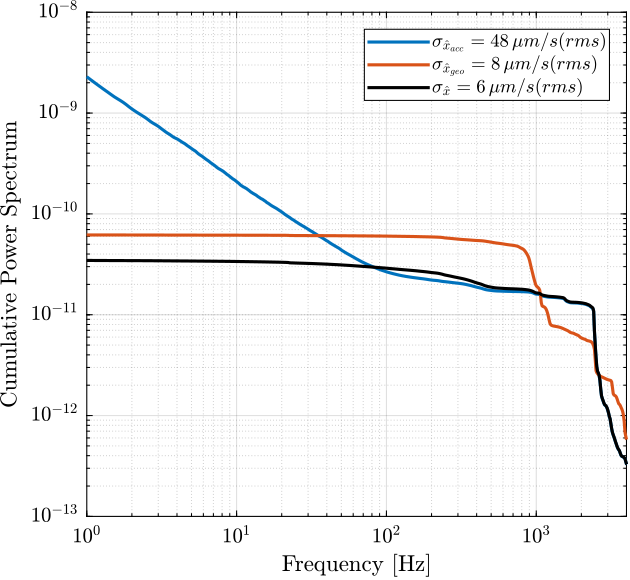
Figure 20: Cumulative Power Spectrum of the Sensor Noise (velocity)
6 Inertial Sensor Dynamics Uncertainty
6.1 Load Data
id = load('./mat/identification_noise_opt_iff.mat', 'd', 'acc_1', 'acc_2', 'geo_1', 'geo_2', 'f_meas', 'u', 't');
id.d = detrend(id.d, 0); id.acc_1 = detrend(id.acc_1, 0); id.acc_2 = detrend(id.acc_2, 0); id.geo_1 = detrend(id.geo_1, 0); id.geo_2 = detrend(id.geo_2, 0); id.f_meas = detrend(id.f_meas, 0);
6.2 Compute the dynamics of both sensors
Ts = id.t(2) - id.t(1); win = hann(ceil(10/Ts));
[tf_acc1_est, f] = tfestimate(id.d, id.acc_1, win, [], [], 1/Ts); [co_acc1_est, ~] = mscohere( id.d, id.acc_1, win, [], [], 1/Ts); [tf_acc2_est, ~] = tfestimate(id.d, id.acc_2, win, [], [], 1/Ts); [co_acc2_est, ~] = mscohere( id.d, id.acc_2, win, [], [], 1/Ts); [tf_geo1_est, ~] = tfestimate(id.d, id.geo_1, win, [], [], 1/Ts); [co_geo1_est, ~] = mscohere( id.d, id.geo_1, win, [], [], 1/Ts); [tf_geo2_est, ~] = tfestimate(id.d, id.geo_2, win, [], [], 1/Ts); [co_geo2_est, ~] = mscohere( id.d, id.geo_2, win, [], [], 1/Ts);
Model of the inertial sensors:
G_acc = 1/(1 + s/2/pi/2500); % [V/(m/s2)] G_geo = -1200*s^2/(s^2 + 2*0.7*2*pi*2*s + (2*pi*2)^2); % [[V/(m/s)]
6.3 Dynamics uncertainty estimation
[ ]Create a weight for both sensors and a nominal model[ ]Make sure the dynamics measured are inside the uncertain model[ ]Compare the uncertainties
6.4 Dynamical Uncertainty
[T_acc, ~] = tfestimate(id.acc_1, id.acc_2, win, [], [], Fs); [T_geo, ~] = tfestimate(id.geo_1, id.geo_2, win, [], [], Fs);
7 To Order
7.1 Huddle Test
The goal here is to measure the noise of the inertial sensors. Is also permits to measure the motion level when nothing is actuated.
7.1.1 Load Data
ht = load('./mat/huddle_test.mat', 'd', 'acc_1', 'acc_2', 'geo_1', 'geo_2', 'f_meas', 'u', 't');
7.1.2 Detrend Data
ht.d = detrend(ht.d, 0); % [m] ht.acc_1 = detrend(ht.acc_1, 0); % [V] ht.acc_2 = detrend(ht.acc_2, 0); % [V] ht.geo_1 = detrend(ht.geo_1, 0); % [V] ht.geo_2 = detrend(ht.geo_2, 0); % [V] ht.f_meas = detrend(ht.f_meas, 0); % [V]
7.1.3 Compute PSD
We first define the parameters for the frequency domain analysis.
Ts = ht.t(2) - ht.t(1); % [s] Fs = 1/Ts; % [Hz] win = hanning(ceil(1*Fs));
Then we compute the Power Spectral Density using pwelch function.
[p_d, f] = pwelch(ht.d, win, [], [], 1/Ts); [p_acc1, ~] = pwelch(ht.acc_1, win, [], [], 1/Ts); [p_acc2, ~] = pwelch(ht.acc_2, win, [], [], 1/Ts); [p_geo1, ~] = pwelch(ht.geo_1, win, [], [], 1/Ts); [p_geo2, ~] = pwelch(ht.geo_2, win, [], [], 1/Ts); [p_fmeas, ~] = pwelch(ht.f_meas, win, [], [], 1/Ts);

Figure 21: ASD of the measured voltage from the inertial sensors during the Huddle test
7.1.4 Sensor Noise in Volts
[coh_acc, ~] = mscohere(ht.acc_1, ht.acc_2, win, [], [], Fs); [coh_geo, ~] = mscohere(ht.geo_1, ht.geo_2, win, [], [], Fs);
pN_acc = p_acc1.*(1 - coh_acc); pN_geo = p_geo1.*(1 - coh_geo);
PSD of the ADC quantization noise.
Sq = (20/2^16)^2/(12*Fs);
figure;
hold on;
plot(f, sqrt(pN_acc), '-', 'DisplayName', 'Accelerometers');
plot(f, sqrt(pN_geo), '-', 'DisplayName', 'Geophones');
plot(f, ones(size(f))*sqrt(Sq), '-', 'DisplayName', 'ADC');
hold off;
set(gca, 'xscale', 'log'); set(gca, 'yscale', 'log');
xlabel('Frequency [Hz]'); ylabel('ASD of the Measurement Noise $[V/\sqrt{Hz}]$');
xlim([1, 5000]);
legend('location', 'northeast');
7.2 Sensor Dynamics
Thanks to the interferometer, it is possible to compute the transfer function from the mass displacement to the voltage generated by the inertial sensors. This permits to estimate the sensor dynamics and to calibrate the sensors.
7.2.1 Time Domain Signals
Excitation signal: noise.
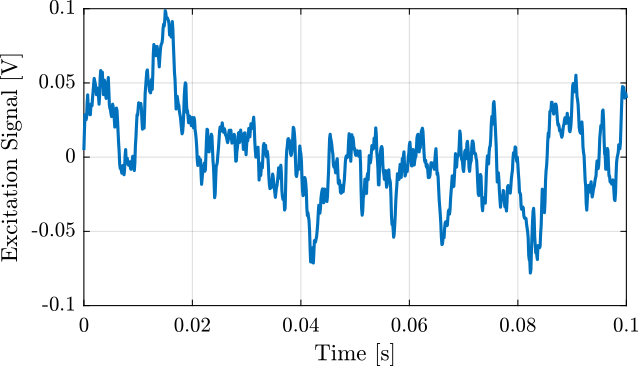
Figure 22: Excitation signal used for the first identification
7.3 H-2 Synthesis - Position
7.3.1 Noise Model
N_acc = 1e-4*(s/(2*pi*2000) + 1)^2/(s + 0.1*2*pi)^2; % [m/sqrt(Hz)] N_geo = 7e-8*(s/(2*pi*200) + 1)/(s + 0.1*2*pi); % [m/sqrt(Hz)]
freqs = logspace(0, 4, 1000);
figure;
hold on;
plot(f, pN_acc, '-', 'DisplayName', 'Accelerometers - Noise');
plot(f, pN_geo, '-', 'DisplayName', 'Geophones - Noise');
set(gca, 'ColorOrderIndex', 1);
plot(freqs, abs(squeeze(freqresp(N_acc, freqs, 'Hz'))), '--', 'DisplayName', 'Geophones - Noise Model');
plot(freqs, abs(squeeze(freqresp(N_geo, freqs, 'Hz'))), '--', 'DisplayName', 'Geophones - Noise Model');
hold off;
set(gca, 'xscale', 'log'); set(gca, 'yscale', 'log');
xlabel('Frequency [Hz]'); ylabel('ASD $\left[\frac{m}{\sqrt{Hz}}\right]$');
xlim([1, 5000]); ylim([1e-13, 1e-5]);
legend('location', 'northeast');

Figure 23: Measured ASD of the inertial sensor noise and generated noise weighting filters
7.3.2 H2 Synthesis
P = [0 N_acc 1;
N_geo -N_acc 0];
And we do the \(\mathcal{H}_2\) synthesis using the h2syn command.
[H_geo, ~, gamma] = h2syn(P, 1, 1); H_acc = 1 - H_geo;

7.3.3 Results
freqs = logspace(0, 4, 1000);
figure;
hold on;
plot(f, pN_acc, '-', 'DisplayName', 'Accelerometers - Noise');
plot(f, pN_geo, '-', 'DisplayName', 'Geophones - Noise');
plot(f, sqrt(pN_acc.^2.*abs(squeeze(freqresp(H_acc, f, 'Hz'))).^2 + pN_geo.^2.*abs(squeeze(freqresp(H_geo, f, 'Hz'))).^2), 'k-', 'DisplayName', 'Super Sensor - Noise');
hold off;
set(gca, 'xscale', 'log'); set(gca, 'yscale', 'log');
xlabel('Frequency [Hz]'); ylabel('ASD $\left[\frac{m}{\sqrt{Hz}}\right]$');
xlim([1, 5000]); ylim([1e-13, 1e-5]);
legend('location', 'northeast');
Integrate only down to 1Hz.
[~, i_1Hz] = min(abs(f - 1));
CPS_acc = 1/pi*flip(-cumtrapz(2*pi*flip(f), flip(pN_acc.^2))); CPS_geo = 1/pi*flip(-cumtrapz(2*pi*flip(f), flip(pN_geo.^2))); CPS_SS = 1/pi*flip(-cumtrapz(2*pi*flip(f), flip(pN_acc.^2.*abs(squeeze(freqresp(H_acc, f, 'Hz'))).^2 + pN_geo.^2.*abs(squeeze(freqresp(H_geo, f, 'Hz'))).^2)));
7.4 Compare Time domain Estimation of the displacement
Let’s compare the measured accelerations instead of displacement (no integration).
G_lpf = 1/(1 + s/2/pi/5e3); acc1_a = lsim(1/G_acc*G_lpf, id.acc_1, id.t); acc2_a = lsim(1/G_acc*G_lpf, id.acc_2, id.t);
geo1_a = lsim(1/G_geo*s*G_lpf, id.geo_1, id.t); geo2_a = lsim(1/G_geo*s*G_lpf, id.geo_2, id.t);
int_a = lsim(s^2*G_lpf*G_lpf, id.d, id.t);
figure;
hold on;
plot(id.t, int_a);
plot(id.t, acc1_a);
plot(id.t, acc2_a);
plot(id.t, geo1_a);
plot(id.t, geo2_a);
hold off;
xlabel('Time [s]'); ylabel('Acceleration [m]');